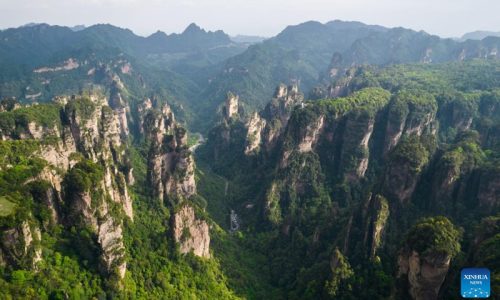Discover the Majestic Jebel Shams Al Hajar Mountains Oman: An Unforgettable Adventure in the Heart of the Hajar Range
Exploring the Jebel Shams Al Hajar Mountains Oman offers travelers a unique opportunity to witness some of the most breathtaking natural landscapes in the Middle East. Known as the highest peak in Oman, this mountain range stands tall with its dramatic cliffs, lush valleys, and panoramic views that captivate every visitor. Whether you’re an avid hiker, nature enthusiast, or someone seeking tranquility amidst pristine scenery, the Jebel Shams Al Hajar Mountains Oman provides an ideal destination for adventure and relaxation alike. From exploring scenic trails that wind through rugged terrain to experiencing the mesmerizing sunrise over the mountain peaks, every moment spent here enriches your understanding of Oman’s rich geological and cultural heritage. The region’s diverse flora and fauna, combined with its traditional villages and local hospitality, make it a must-visit for those eager to connect with nature and discover the authentic spirit of Oman. Embark on a journey to this majestic mountain range and create memories that will last a lifetime, all while enjoying the comfort and safety provided by trusted local guides and well-maintained routes. The Jebel Shams Al Hajar Mountains Oman promises an extraordinary experience filled with awe-inspiring vistas, cultural insights, and exhilarating outdoor activities that cater to all levels of adventurers and explorers.

Discovering the Majestic Jebel Shams: The Highest Peak in Oman and a Natural Wonder of the Hajar Mountains
Jebel Shams, towering over 3,000 meters, stands as the highest summit in Oman and a crown jewel of the Hajar Mountains. This iconic mountain not only offers breathtaking panoramic views but also serves as a symbol of natural beauty and adventure tourism in Oman. Visitors are drawn to its stunning sunrises and sunsets, making it a must-visit destination for nature lovers and trekkers alike. The rugged terrain, diverse flora, and awe-inspiring cliffs create an unforgettable experience for those seeking both tranquility and thrill in the heart of Oman’s wilderness.
The mountain’s unique geological formations and lush terraced valleys provide a perfect backdrop for outdoor activities. Hiking trails around Jebel Shams cater to all levels, from casual walkers to seasoned mountaineers. The cool climate during most of the year makes it an ideal escape from the heat of the coastal regions. Exploring this natural wonder allows travelers to immerse themselves in the untouched beauty of the Hajar Mountains, witnessing spectacular vistas that stretch as far as the eye can see.
Whether you’re capturing stunning photographs, enjoying a peaceful picnic, or simply soaking in the vastness of the landscape, Jebel Shams offers a diverse array of experiences. Its proximity to traditional villages and agricultural terraces provides insight into the local culture and sustainable mountain farming practices. Visiting this peak is not just about conquering a summit but about connecting with the raw, unspoiled environment that defines Oman’s rugged landscape.
The Rich History and Cultural Significance of Jebel Shams and the Hajar Region
The area surrounding Jebel Shams is steeped in history and local legends, reflecting centuries of human settlement and cultural evolution. The Hajar Mountains have been home to ancient tribes and communities who have relied on the mountain’s resources for generations. Traditional villages nestled in the valleys showcase authentic Omani architecture and craftsmanship, offering a glimpse into the region’s rich heritage.
Historical tales speak of strategic importance, with mountain passes serving as routes for trade and migration. Local folklore often attributes mystical qualities to Jebel Shams, associating it with stories of legendary heroes and spiritual significance. The mountain’s prominence in local culture underscores its role as a symbol of resilience and natural grandeur, connecting past and present in Oman’s collective identity.
Exploring the cultural landscape around Jebel Shams provides visitors with a deeper understanding of Oman’s diverse traditions. From ancient terraced farms to traditional music and crafts, the region’s heritage is woven into every aspect of life here. Engaging with local communities enriches the travel experience, making it a meaningful journey into Oman’s historical soul.
Best Routes and Tips for Adventurous Access to Jebel Shams
Reaching the summit of Jebel Shams involves navigating a variety of routes suitable for different adventure levels. The most popular approach is via the rugged mountain roads accessible by four-wheel-drive vehicles, which wind through scenic landscapes and offer spectacular viewpoints along the way. The main access points from Nizwa or Al Hamra are well-maintained but require careful driving due to steep inclines and sharp turns.
For those seeking a more immersive experience, trekking paths such as the Balcony Walk provide a thrilling opportunity to explore the mountain’s edge and deep valleys. This trail, approximately 2-3 hours long, demands good physical condition and proper gear, including sturdy footwear, water, and sun protection. Guided tours are highly recommended to ensure safety and to gain insights into the region’s geology and ecology.
Preparation is key for a successful adventure. Always check weather conditions before departure, carry sufficient supplies, and inform someone about your plans. Respect local regulations and stay on designated trails to preserve the environment. With proper planning, your journey to Jebel Shams will be both safe and exhilarating, rewarding you with unforgettable vistas and a sense of achievement.
Exploring the Hidden Trails and Scenic Spots Around Jebel Shams
The area surrounding Jebel Shams boasts numerous hiking trails that reveal the mountain’s hidden beauty and diverse ecosystems. The Wadi Ghul trail, often called the “Grand Canyon of Oman,” offers dramatic cliffs, deep gorges, and lush oases. Walking along these paths provides opportunities for photography, birdwatching, and experiencing the serenity of untouched nature.
Other notable routes include the Wadi Nakhr and Wadi Bani Awf, which lead explorers through narrow canyons, terraced farms, and traditional villages. These trails are perfect for adventure seekers looking to discover panoramic viewpoints, natural waterfalls, and unique rock formations. The changing scenery from rocky slopes to verdant valleys makes each step a new discovery.
To make the most of your exploration, carry a detailed map, sufficient water, and wear appropriate clothing. Respect the environment by avoiding littering and disturbing wildlife. Whether you’re seeking solitude or capturing stunning landscape shots, these trails offer a rich tapestry of natural wonders waiting to be uncovered around Jebel Shams.
Thrilling Experiences and Spectacular Views at Jebel Shams
Jebel Shams is renowned for its awe-inspiring vistas that captivate every visitor. Standing at the edge of the mountain’s cliffs, travelers can gaze across vast canyons and mountain ranges that extend into the horizon. The dramatic drop-offs and panoramic outlooks create perfect settings for photography and reflection.
Sunrise and sunset are particularly magical times to visit, as the changing light transforms the landscape into a canvas of colors. Adventure enthusiasts can also indulge in activities like rock climbing, via ferrata, and paragliding, which add an adrenaline rush to the scenic experience. Nighttime offers a chance to stargaze in the clear desert sky, completing a full sensory immersion into nature’s grandeur.
Every viewpoint and trail around Jebel Shams promises a new perspective, making it a haven for outdoor lovers and photographers. The combination of thrilling activities and breathtaking scenery ensures that every moment spent here becomes a cherished memory.
Essential Safety Tips and Recommendations for Visiting Jebel Shams
Ensuring a safe and enjoyable trip to Jebel Shams requires careful planning and awareness. Always check weather forecasts before heading out, as conditions can change rapidly in mountainous terrain. Wear appropriate clothing, including sturdy hiking boots, layered outfits, and sun protection, to adapt to temperature variations.
Carry sufficient water, snacks, and a basic first aid kit. If venturing onto trails or climbing routes, consider hiring a local guide who knows the area well. Inform someone about your itinerary and expected return time for added safety. Avoid risky maneuvers near cliff edges and stay on designated paths to prevent accidents and environmental damage.
Respect the natural environment by not disturbing wildlife or leaving trash behind. Follow local guidelines and signage to preserve the mountain’s pristine condition. With these precautions, your adventure at Jebel Shams will be both secure and memorable, allowing you to fully enjoy the mountain’s majestic beauty.
Accommodation Options Near Jebel Shams and How to Choose the Best Stay
While Jebel Shams itself offers limited lodging options, the surrounding areas feature a variety of accommodations to suit different preferences. From luxurious hotels with modern amenities to traditional guesthouses and eco-friendly campsites, visitors can find suitable options nearby. Many lodges provide stunning mountain views, authentic Omani hospitality, and convenient access to tails and viewpoints.
For a unique experience, consider staying in a traditional Bedouin-style tent or a mountain cabin, which immerses you in the natural environment. Booking in advance is recommended, especially during peak seasons, to secure the best rates and availability. When choosing your accommodation, consider proximity to key attractions, facilities offered, and reviews from previous guests.
Staying close to Jebel Shams allows for early morning hikes, sunset viewing, and a relaxed exploration of the region’s cultural sites. Proper planning ensures a comfortable and enriching stay, making your visit to this majestic mountain even more memorable.
Capturing the Beauty of Jebel Shams: Top Photography Tips and Best Spots
The dramatic landscapes of Jebel Shams provide endless opportunities for stunning photography. To capture the mountain’s grandeur, aim for early morning or late afternoon when the light accentuates the rugged terrain and deep valleys. Use a wide-angle lens to encompass the vastness of the scenery and a tripod for sharper images during low-light conditions.
Key spots include the Balcony Walk viewpoint, the edge of the canyon, and scenic overlooks along the mountain roads. Experiment with different angles to highlight the contrast between rocky cliffs, green terraces, and the expansive sky. Night photography under the starry desert sky can also produce mesmerizing images of the Milky Way and celestial bodies.
Remember to respect the environment by avoiding flash photography near wildlife and staying on designated paths. Carry extra batteries and memory cards to ensure you don’t miss any perfect shot. With patience and preparation, your photos will beautifully showcase the awe-inspiring beauty of Jebel Shams and the surrounding Hajar Mountains.
Frequently Asked Questions
- What is Jebel Shams and why is it famous?
- Jebel Shams is the highest peak in Oman, reaching over 3,000 meters above sea level. Known as the “Mountain of the Sun,” it is famous for its breathtaking panoramic views, rugged terrain, and diverse flora. It is a popular destination for hikers, nature lovers, and adventure seekers who want to experience the natural beauty of the Hajar Mountains.
- What are the best activities to do at Jebel Shams?
- Visitors can enjoy a variety of outdoor activities such as hiking along scenic trails like the Balcony Walk, exploring deep canyons like Wadi Ghul, rock climbing, and photography. The mountain also offers opportunities for picnicking, camping, and witnessing spectacular sunrises and sunsets.
- How can I reach Jebel Shams?
- The most common route is via the mountain roads accessible by four-wheel-drive vehicles from nearby towns like Nizwa or Al Hamra. For a more adventurous experience, trekking routes such as the Balcony Walk provide a closer connection with nature. It is advisable to check weather conditions and prepare accordingly.
- What is the best time of year to visit Jebel Shams?
- The ideal time to visit is during the cooler months from October to April when the weather is mild and suitable for outdoor activities. Summers can be very hot, especially in lower elevations, but the mountain’s elevation provides a cooler climate.
- Are there guided tours available for Jebel Shams?
- Yes, many local operators offer guided tours, including hiking excursions, adventure activities, and cultural visits. Guided tours are recommended for safety and to gain insights into the region’s geology, ecology, and local culture.
- What should I pack for a trip to Jebel Shams?
- Bring sturdy hiking boots, layered clothing, sun protection, plenty of water, snacks, and a camera. If planning to camp or hike long distances, carry a first aid kit, flashlight, and necessary camping gear.
- Is it safe to hike around Jebel Shams?
- With proper preparation and caution, hiking is safe. Always stay on designated trails, check weather forecasts, and avoid risky maneuvers near cliffs. Hiring a guide is recommended for unfamiliar routes or challenging terrains.
- What are the nearby attractions to Jebel Shams?
- Nearby attractions include traditional villages like Al Khitaym, the Al Hoota Cave, and the historic city of Nizwa. Exploring these sites offers a deeper understanding of local culture and history.
- Are there accommodations near Jebel Shams?
- While lodging options directly on the mountain are limited, nearby towns offer hotels, guesthouses, and eco-camps. Booking in advance is recommended, especially during peak seasons.
- Can I photograph the scenery at Jebel Shams?
- Absolutely! The mountain provides stunning photo opportunities, especially at sunrise and sunset. Key spots include the Balcony Viewpoint and the canyon edges. Use a wide-angle lens and tripod for best results.
- What safety tips should I follow when visiting Jebel Shams?
- Always check weather conditions, carry sufficient supplies, inform someone of your plans, and stay on marked trails. Respect local regulations and avoid risky activities near cliffs to ensure a safe visit.
- What is the cultural significance of Jebel Shams?
- The mountain holds cultural importance for local communities, with legends and stories associated with it. Traditional villages nearby showcase authentic Omani architecture, and the region reflects a rich heritage of mountain farming and local craftsmanship.
- How can I best prepare for a trek to Jebel Shams?
- Plan your route carefully, check weather forecasts, pack appropriate gear, and consider hiring a guide. Physical fitness, proper clothing, and hydration are key to a successful and enjoyable trek.
- What are some scenic spots around Jebel Shams for exploration?
- Explore Wadi Ghul, known as the “Grand Canyon of Oman,” Wadi Nakhr, and Wadi Bani Awf. These areas offer dramatic cliffs, waterfalls, terraced farms, and traditional villages, perfect for adventure and photography.
- Why is Jebel Shams considered a natural wonder?
- Its towering cliffs, unique geological formations, lush valleys, and panoramic vistas make it a spectacular example of natural beauty. The mountain’s diverse ecosystems and breathtaking scenery attract nature enthusiasts from around the world.
























